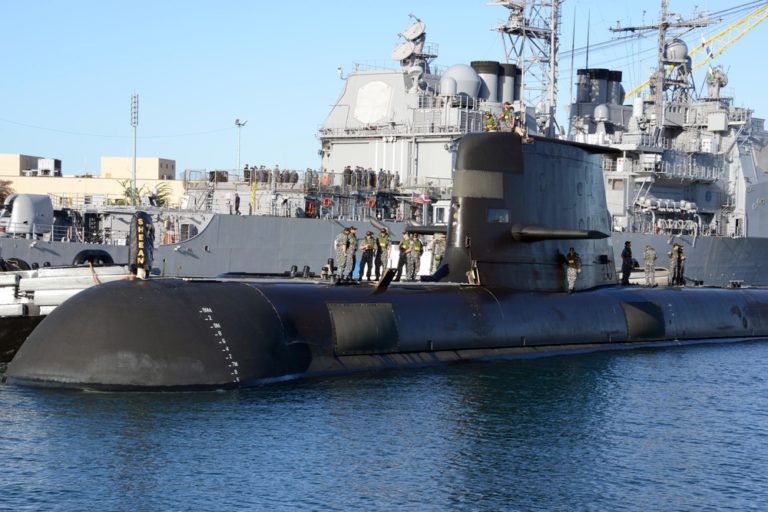What is the Importance of the AUKUS Announcement on Submarines?

Q1: What did the announcement say?
A1: On September 15, President Joe Biden, Prime Minister Boris Johnson, and Prime Minister Scott Morrison jointly announced the establishment of a new partnership between the United States, United Kingdom, and Australia to expand cooperation on emerging technologies, and bolster existing advantages in military capability. The first project under this partnership is to develop, build, and operate a fleet of nuclear-powered submarines for Australia. The project is expected to take decades while the initial design phase alone was announced to take 18 months.
Q2: The United States sells arms all the time. Why is this different?
Q2: U.S. nuclear submarine technology is one of the military’s most closely guarded secrets. The United States has only shared that that technology with the United Kingdom and the announcement is an indication of the high degree of confidence the current administration has for Australia.
Q3: Why is the technology so closely guarded?
Q3: Nuclear propulsion technology provides the United States with unmatched advantages at sea. Nuclear reactors in submarines can never turn off once running. That means they must be constantly cooled, regulated, and managed. In a normal environment, the work of pumps, gears, and other industrial equipment would generate a lot of noise. A noisy submarine is more likely to be identified, tracked, and—when in conflict—sunk, by a rival fleet. So the United States has invested in the technology and practices necessary to ensure a more stealthy, quiet-running fleet of submarines and worked very hard to ensure those technologies remain secret.
Q4: Isn’t giving nuclear technology to another state a violation of non-proliferation commitments?
A4: No. All three leaders made very clear in their remarks that the submarines will be nuclear-powered, not nuclear-armed, and that they would continue to uphold commitments to nuclear nonproliferation agreements. Prime Minister Morrison was clear that “Australia is not seeking to acquire nuclear weapons or establish a civil nuclear capability.” Prime Minister Johnson followed, saying, “…the submarines in question will be powered by nuclear reactors, not armed with nuclear weapons.” President Biden was equally clear, saying they would be “conventionally armed submarines powered by nuclear reactors. This technology is proven. It’s safe.”
Q5: Why are nuclear-powered submarines a good choice for Australia?
A5: Nuclear submarines are able to move faster, travel further, and remain underwater longer. This is largely due to the fact that they do not need to be refueled. All of their “gas” is put in when the reactor is installed. Australia’s main shipyards and navy ports are located far from areas where these submarines would be of greatest effect: the northern Indian Ocean, the Western Pacific, and the East China Sea. Nuclear submarines are well-suited for those deep water, open-ocean areas. Their indefinite range also makes them much more capable to get to—and stay in—those areas.
Q6: What is the strategic benefit of this change?
A6: The announcement sends an unmistakable message that the United States, the United Kingdom, and Australia are committed to working together to achieve common objectives, including on difficult and sensitive topics like nuclear powered submarines. President Biden’s frequent references to the “Free and Open Indo-Pacific”—the notion that countries in the region should be free to conduct commerce, operate as sovereign states, and adhere to internationally recognized laws, standards and norms—highlighted that the new cooperative effort aims to sustain the current system well into the future. Prime Minister Johnson’s comments underscored that the Indo-Pacific region—and preserving free and open commerce there—is important to all countries in the world. The message implicit in the announcement and its intended re-shaping of global security engagement is that the three countries have concerns that the “Free and Open” aspect of the Indo-Pacific region is in jeopardy and new levels of cooperation are needed to preserve it.
Q7: Isn’t the agreement all about China?
A7: Of course not. But also, yes. The U.S.-Australia alliance is as close as it has ever been, largely because of close cooperation, through side-by-side operations conducted over many years in Afghanistan and ongoing extensive engagement in bilateral efforts, the Five Eyes intelligence exchange mechanism, and many growing cultural and educational linkages. Additionally, the past several years has seen greater alignment of Australian and U.S. perceptions—and judgments—about the geopolitical changes and risks in the Indo-Pacific region. China has been the primary driver of those changing perceptions. Its island-building campaign, human rights abuses, political subversion, and economic coercion, seen as completely normal and legitimate in Beijing, has provided countries around the region and world more broadly with a direct impression of the kind of world China seeks to establish. It leaves little room for non-PRC agency, and so states are taking steps to ensure they can advance their own sovereign interests.
Photo Credit: Petty Officer 1st Class Jason Swink

